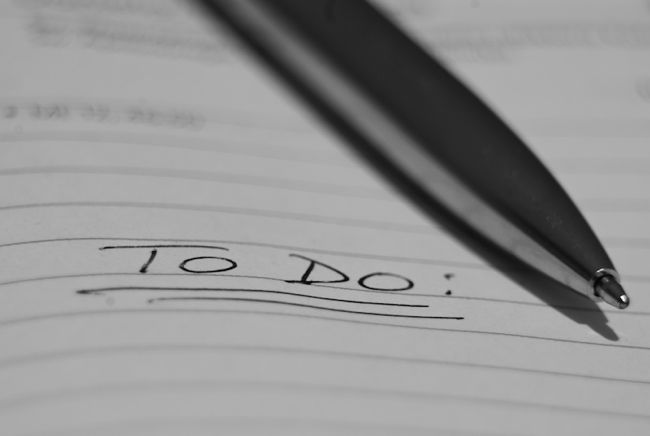
Dan John has said before that if something is important, you should do it every day. You know—things like brushing your teeth, eating vegetables, and avoiding any of Tracy Anderson's advice, just to name a few. Below are a few things I believe are worth doing on a daily basis that can make you a stronger and healthier individual.
Hinge: As sedentary as our society is, I can't think of many things that are as important as hinging the hips. Aside from grooving proper hip movement patterns, hinging can have a host of benefits for knee, ankle, and low back health as well as combat reciprocal inhibition of the glutes and hip flexors. In other words, it does a lot.
Heavy deadlifts, glute bridges, and hip thrusts are great options to use within your training, but they may not be ideal or practical for everyone to do on a daily basis. Good alternatives to heavy loaded hinges are body weight variations. Single-leg Romanian deadlifts or body weight glute bridges can serve as great options for grooving proper hinge patterns without requiring you to go to the gym. Even dropping into your conventional or sumo deadlift pattern and mimicking heavy pulls for 10–12 reps can do a lot of good. At the very least, you should be performing a hinge every time you lift something off the floor.
No matter how you do it, do it every day and keep your hips and glutes reminded of their proper functions.
Self-myofascial release: Most people have "hot spots" when self-myofascial releasing that are much more troublesome than others or at least have a propensity to get angry more quickly than others. While I think there is something to be said for foam rolling the entire body on a daily basis, keeping those more troublesome spots from becoming more dense has a lot of merit and can keep you feeling better in general.
If you're in tune with your body at all, you know the spots that give you more grief than others. Keep those dense areas from sneaking back up on you. If you need a starting place, a good rule of thumb is this—if you sit all day at work, roll your hip flexors. If you're on your feet all day, roll your feet using a lacrosse ball. Spending a few minutes doing this every day can greatly benefit how you feel.
Activate your lower traps: Most people tend to have upper trap dominance. They carry tension in their upper traps. They shrug through every movement, and they fail to use their diaphragm properly when breathing, causing an overuse of the neck and trapezius muscles. All this can lead to an imbalance that can effect shoulder health, bring about general discomfort, and greatly reduce the efficacy of many exercises.
Two of my favorite exercises for stimulating the lower traps are behind the neck pull-aparts and scapular wall slides. Both movements get the lower traps firing, open up the chest, and help groove scapular stabilization—all things a sedentary life doesn't encourage.
Whether I'm writing blogs or programs for clients, responding to emails, or working on articles for awesome sites like elitefts™, I try to get up frequently if I'm sitting at a computer for more than 30 minutes and do 8–15 reps of one or both of these exercises. Not only does this take away the tension that prolonged sitting brings on, but it also gives me a huge boost of energy and clarity.
Additionally, keeping your lower traps fired and enabling them to be more dominate than they currently are can translate to things like a bigger bench and healthier shoulders. Who doesn't want that?
Stretch: Although a hotly debated topic, I'm in the camp that believes there is still a lot of good to come from stretching. It can help individuals get a cleaner and deeper range of motion in movements that they wouldn't be able to reach otherwise. Also, without trying to sound too "new age-ish," I believe that stiffness in a muscle can block the flow of energy in an individual, creating energy leaks, fatigue, and general malaise.
I've found that two common areas in need of some stretching are the hips and the calves—the hips because we sit all day, causing shortness of the hip flexors, and the calves because modern footwear puts us in a constant state of plantar flexion.
Relax: Finally, and perhaps most importantly, relax. Let me be clear here—I'm not talking about getting home from work, heating up a microwaveable pizza, and sitting in front of the television until you pass out. That isn't relaxing. That's being lazy, and there is a huge difference between the two.
When I say relax, I'm taking about taking it easy with a purpose—intentionally spending time recuperating for the mind, body, and soul. Often times, doing something that brings recovery to one of these brings recovery to all of them. For example, if you find that laying in a hammock reading a book brings recovery to your mind, there's a good chance it does the same for your body and your soul. Things like reading a good novel, going for a walk, playing with your kids, or having a conversation with your spouse that doesn't revolve around bills needing to be paid or the trash needing to be taken out are a good place to start.
The point is don't go through life exhausting every element of yourself. Doing so breaks you down and makes you not as much fun to be around. Take time—even if it's a few minutes—to relax and recover.
Doing these five things daily really can do a lot for your health, but you may have other things you've identified as important to you and that's completely fine. Identify what they are and do them. Making a point to do them regularly also builds discipline, which is another thing worth practicing daily.








